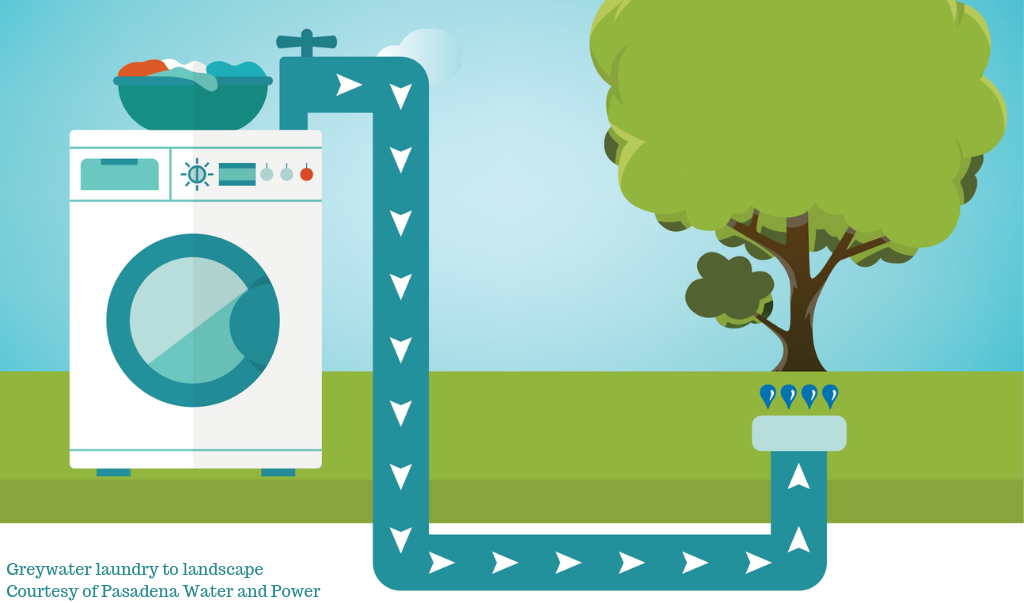Posted on 21 June 2019 By Charles Alex Malotte
What is graywater?
Graywater (also spelled “greywater” or “gray water”) is water from showers, tubs, bathroom sinks, and clothes washers. Graywater does not include sewage.
Graywater is an ideal resource for reuse:
- Landscaping irrigation is often the single biggest category of urban water use, accounting for up to 70% of total water urban use, particularly in warmer inland areas. Fortunately, graywater is ideal for irrigating landscaping, and can make good use of the 60% of indoor waters appropriate for graywater reuse.
- Outdoor graywater use requires no treatment. Simple laundry-to-landscape systems, where drain water from the clothes washer goes directly out to irrigate plants are inexpensive to install and do not require a permit.
- Graywater systems can be designed to use gravity rather than a pump, saving energy in the reuse process.
- Graywater is safe for use when simple guidelines are followed. Millions of systems have been in use for decades without any confirmed threats to public health.
- Homes, institutions, and businesses produce a steady stream of graywater year round. It is estimated that 37 gallons of graywater per person per day are available in Southern California’s urban area. Even if only 10% of households had graywater systems, the reduction in water use could equal the output of an entire desalination plant. In the Los Angeles area, graywater reuse capacity could range from 50 to 165 million gallons per day, approximately 60% of total indoor water use.
 Graywater is an abundant, safe and reliable local water source California’s Graywater Standards are now part of the State Plumbing Code, making it legal to use graywater everywhere in California. These standards were developed and adopted in response to Assembly Bill 3518, the Graywater Systems for Single Family Residences Act of 1992.Many small landscaping and plumbing businesses have specialized in the design and installation of residential graywater systems. Larger and more complex systems are designed by engineers.
Graywater is an abundant, safe and reliable local water source California’s Graywater Standards are now part of the State Plumbing Code, making it legal to use graywater everywhere in California. These standards were developed and adopted in response to Assembly Bill 3518, the Graywater Systems for Single Family Residences Act of 1992.Many small landscaping and plumbing businesses have specialized in the design and installation of residential graywater systems. Larger and more complex systems are designed by engineers.
The seven steps to follow to put graywater to use in your landscape are:

1. Investigate the permit process
2. Prepare a plan
3. Design the graywater system
4. Submit the plan for review and approval
5. Install the system
6. Arrange for system inspection and approval
7. Use, monitor and maintain the system
Common sense says water should be reused as many times as possible. The good thing is, that it can, and your pocket and Mother Earth will thank you for it.
Want to find out more? angsc.org/water

